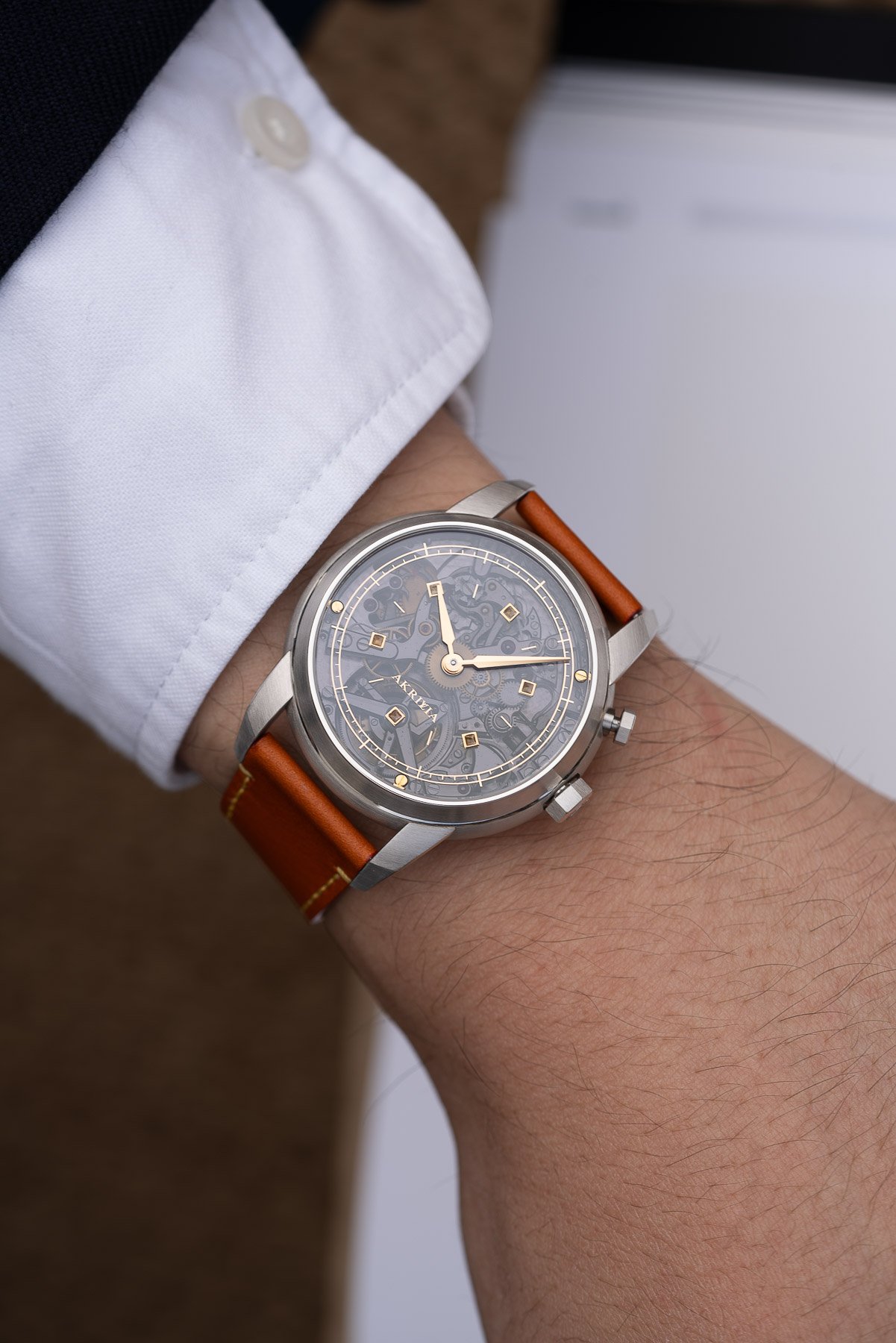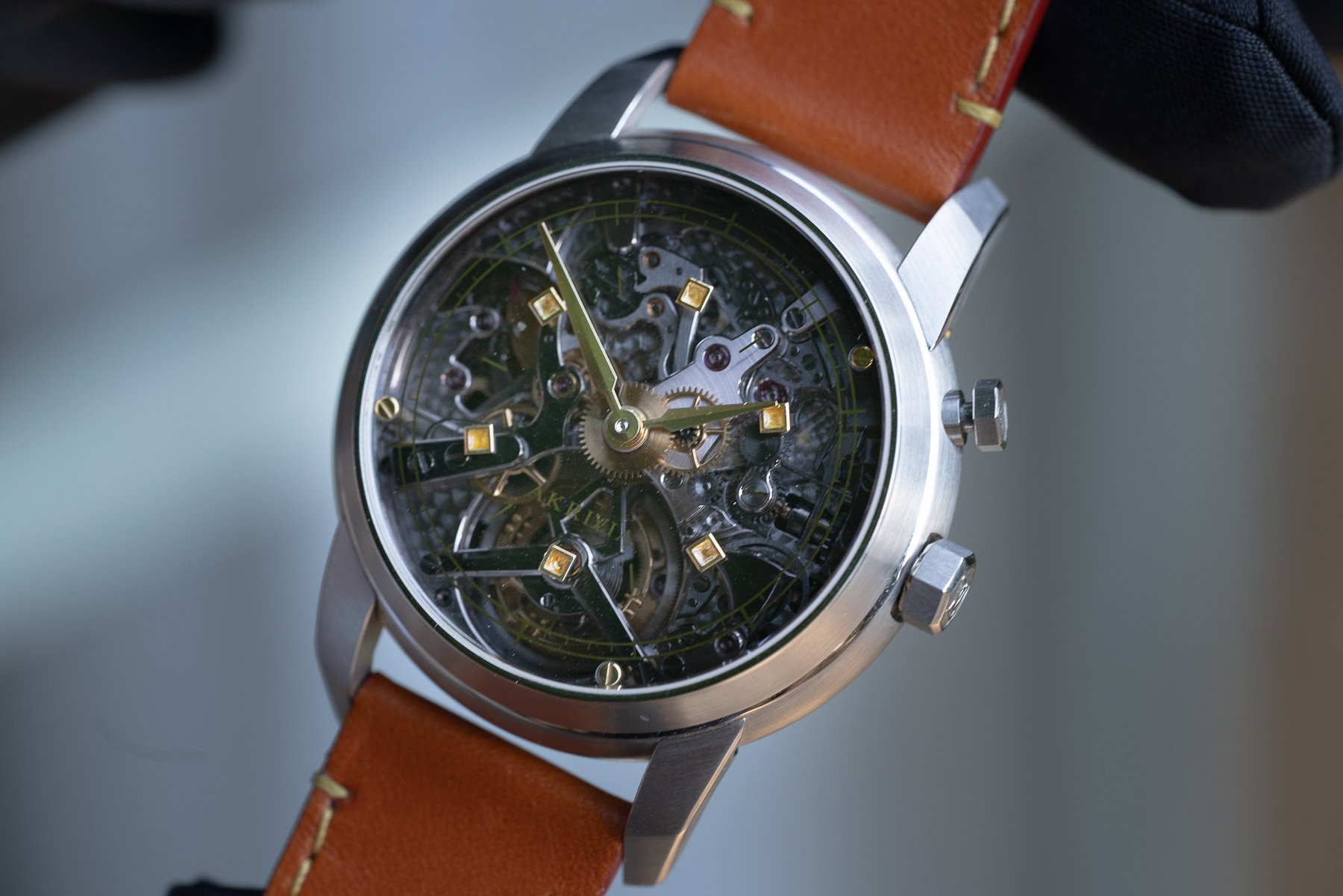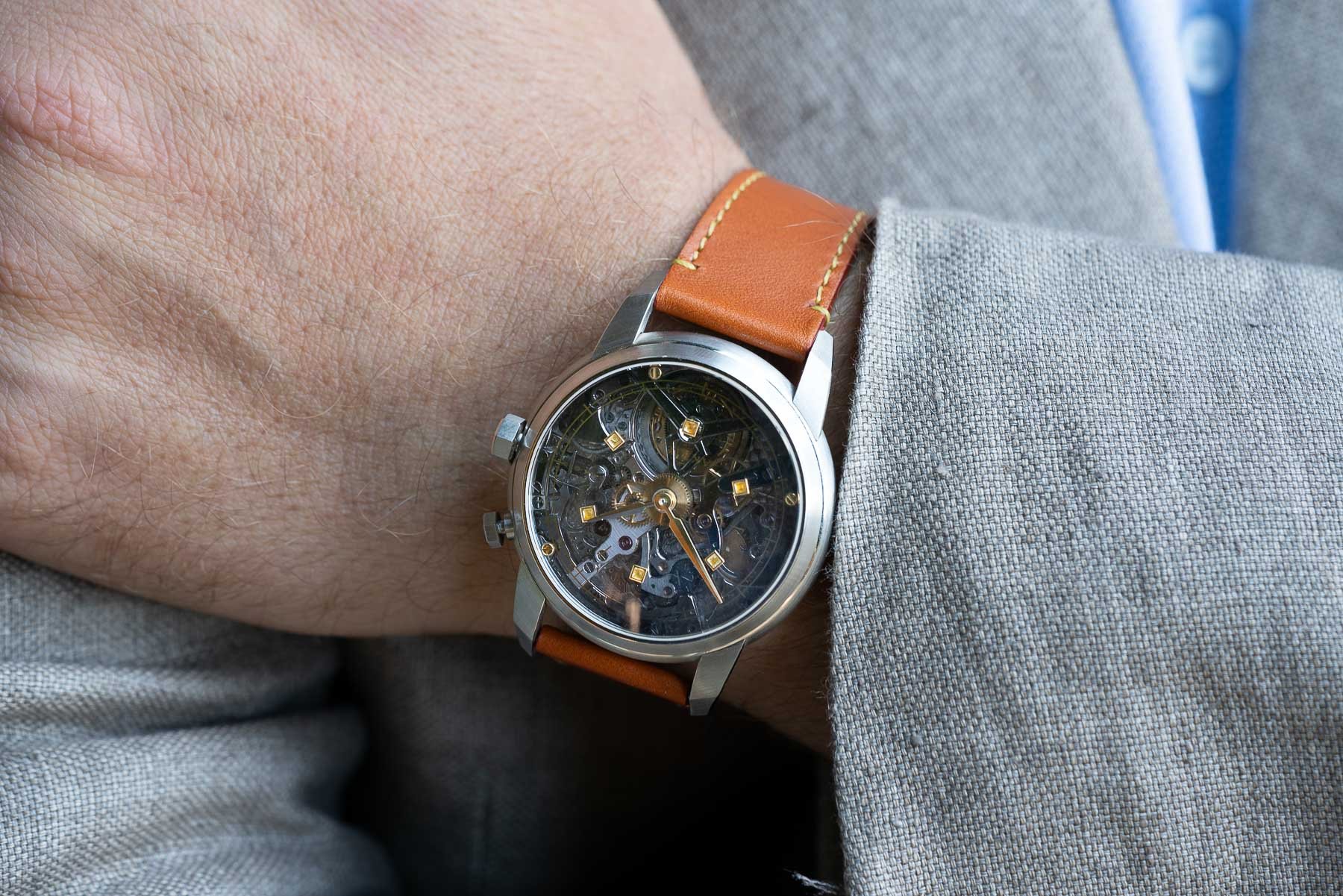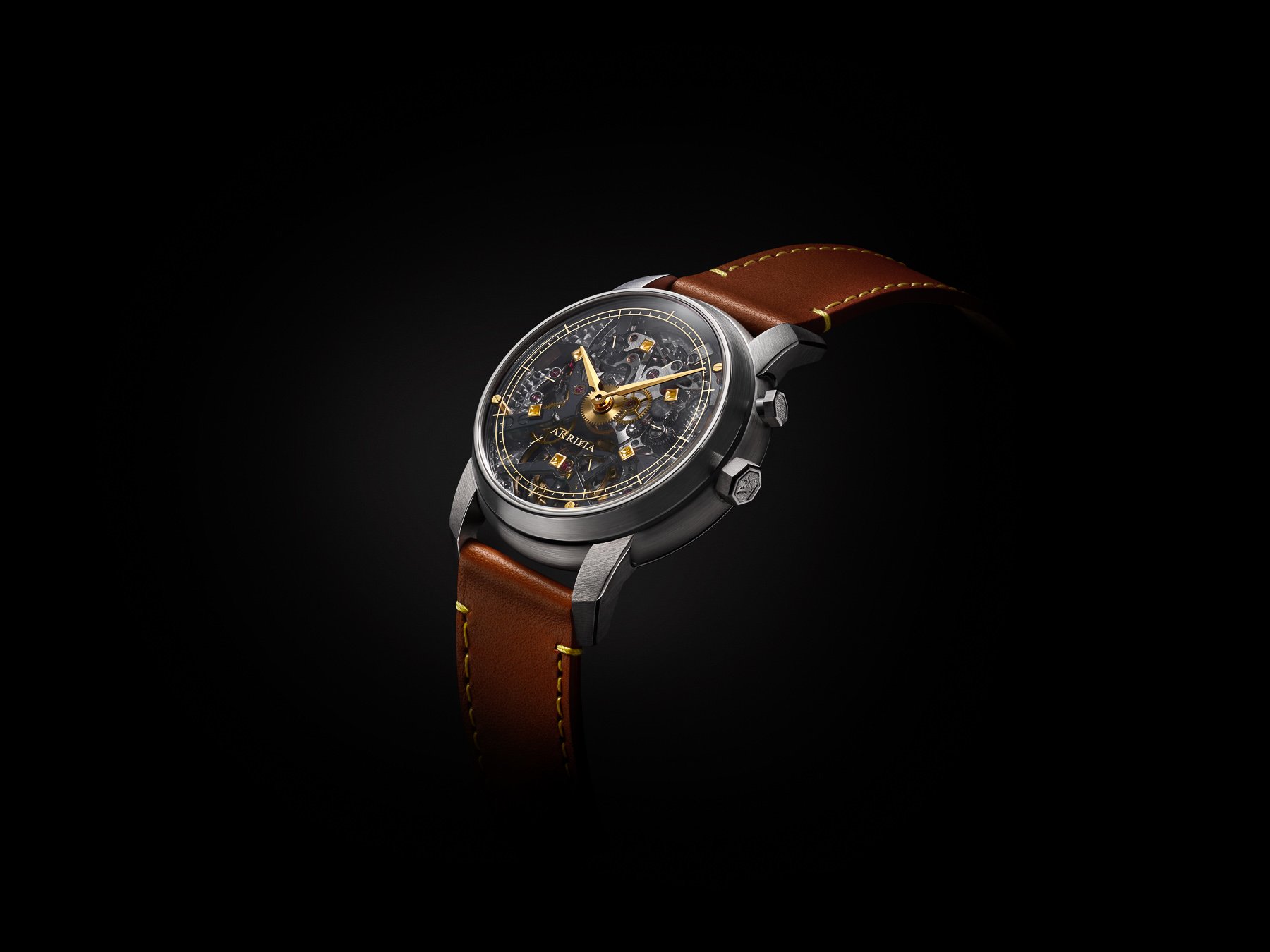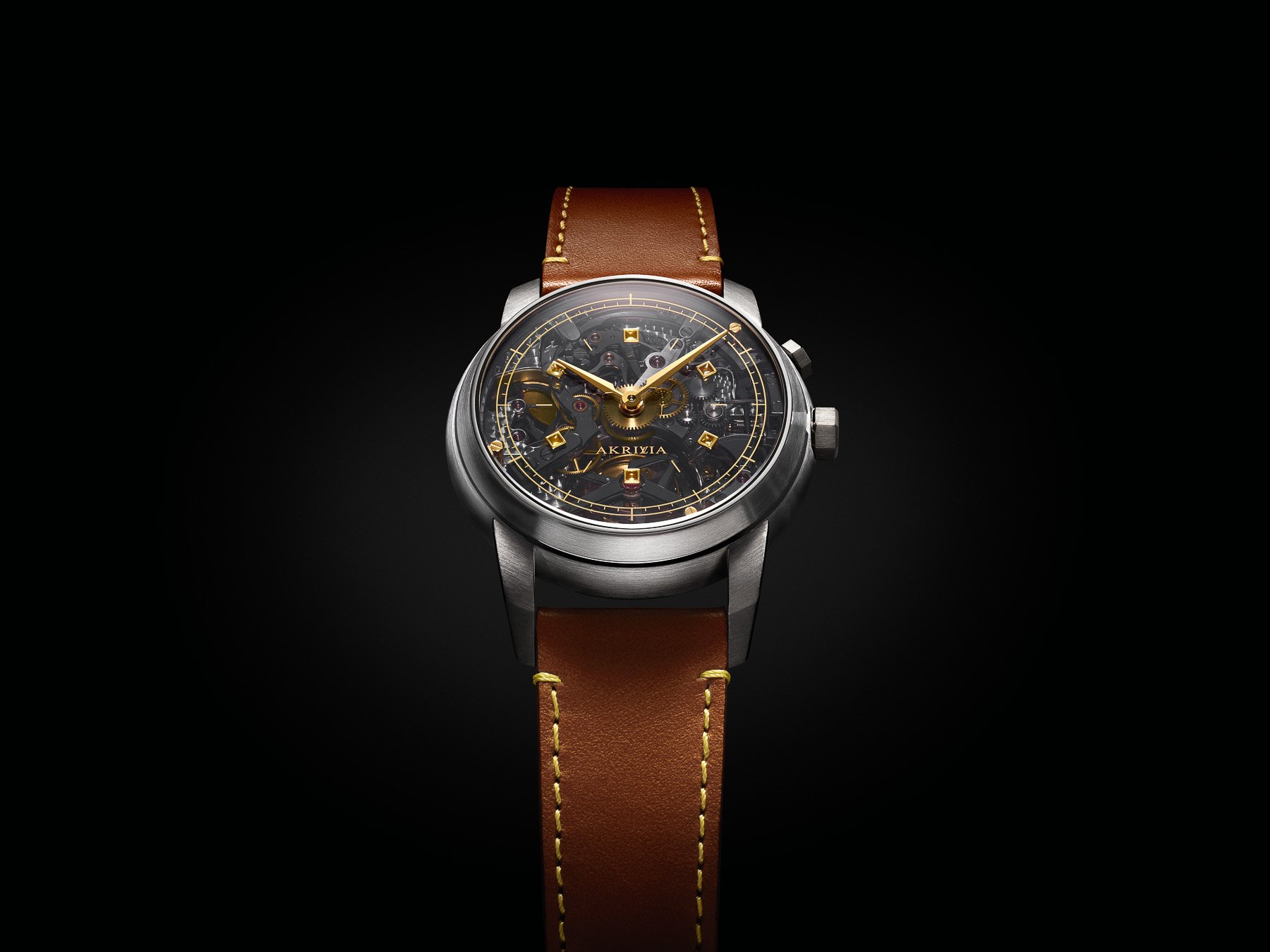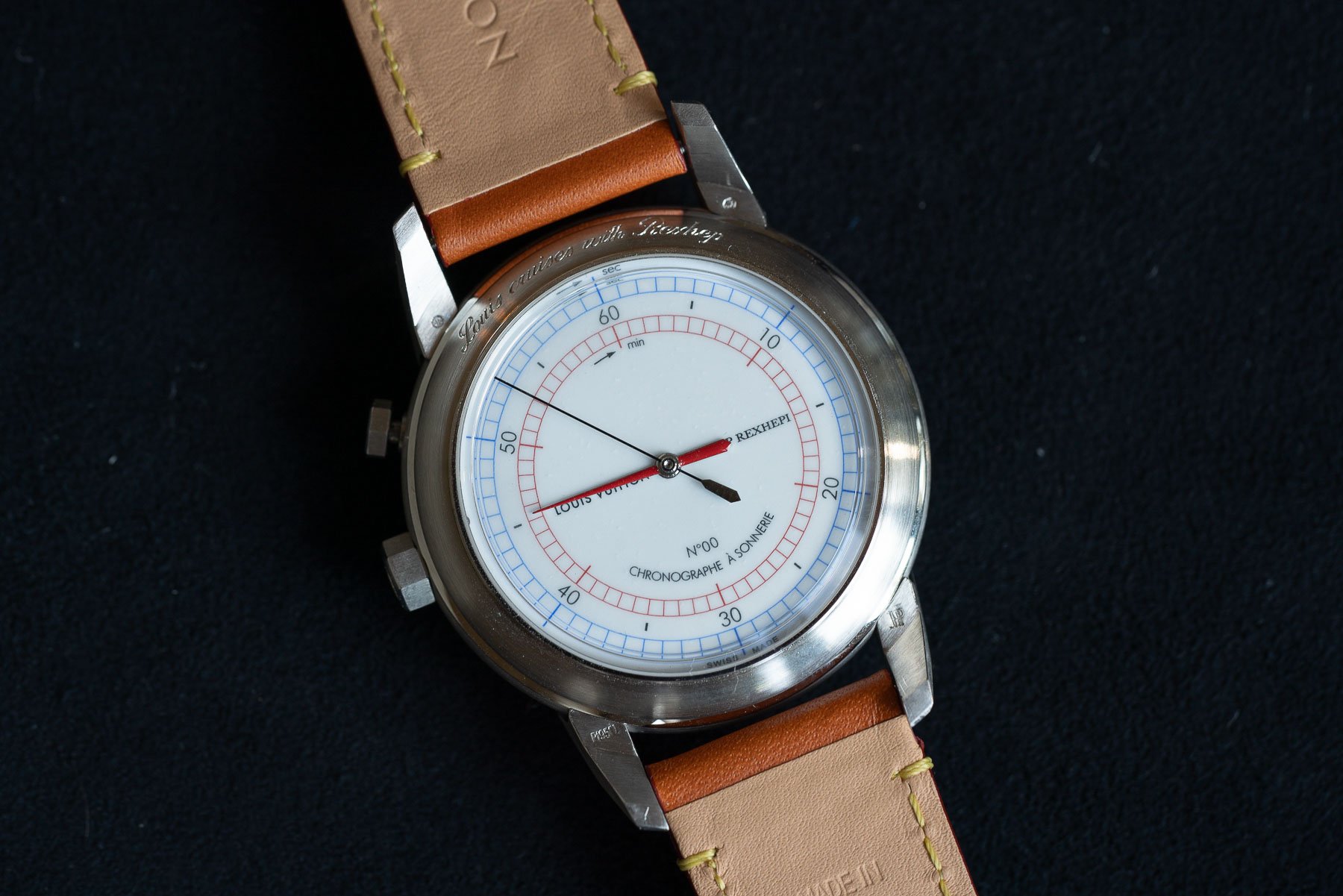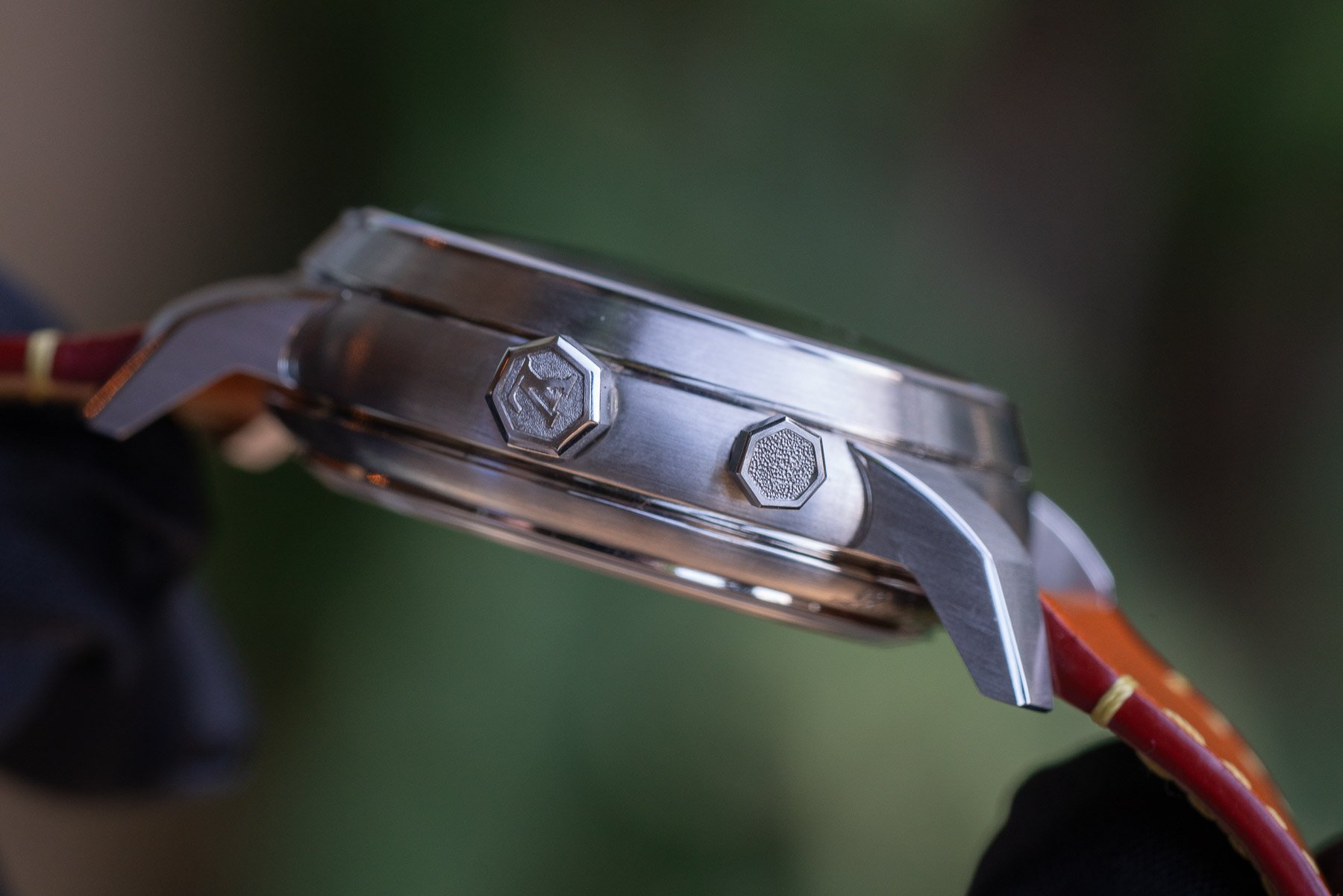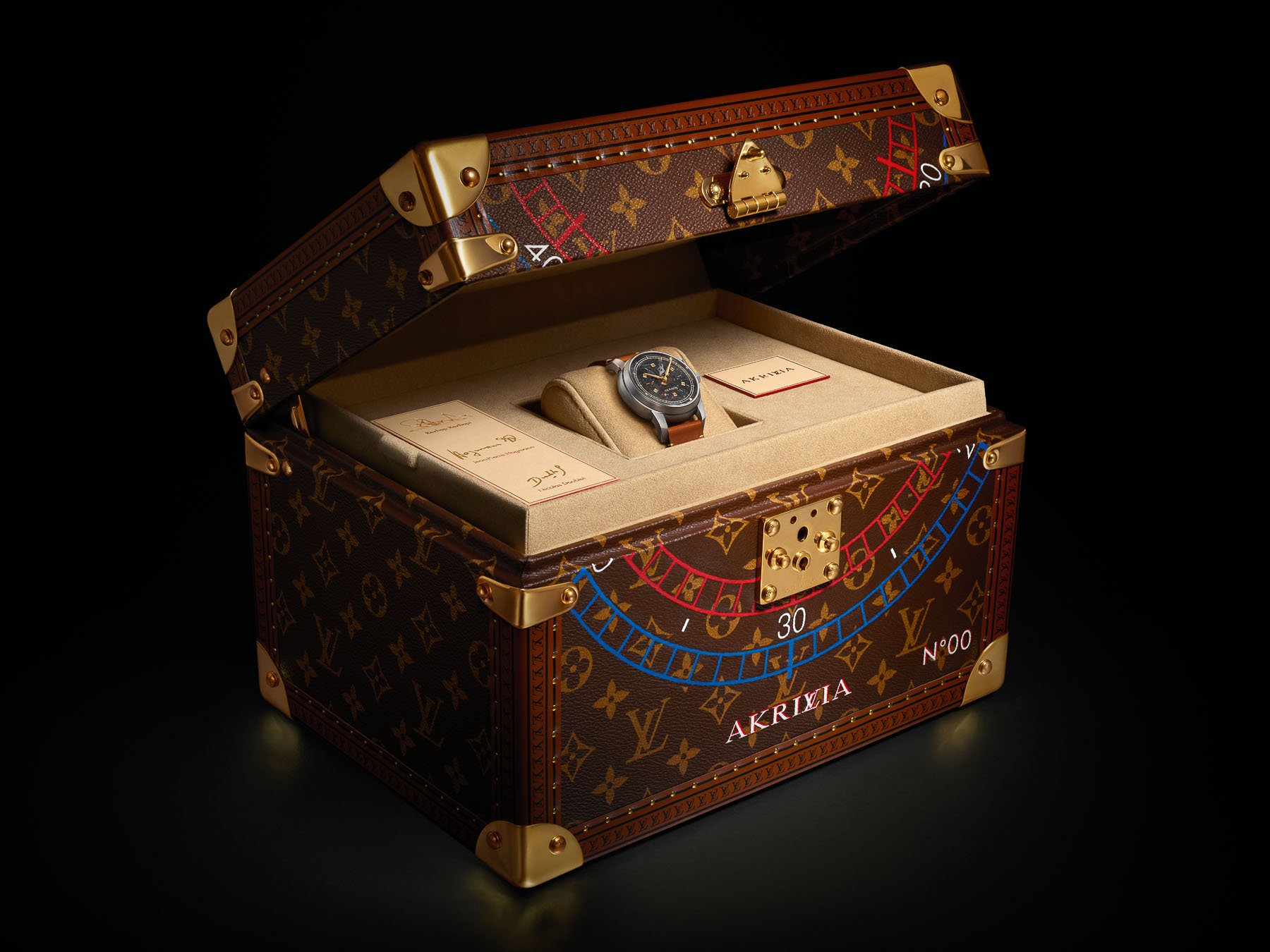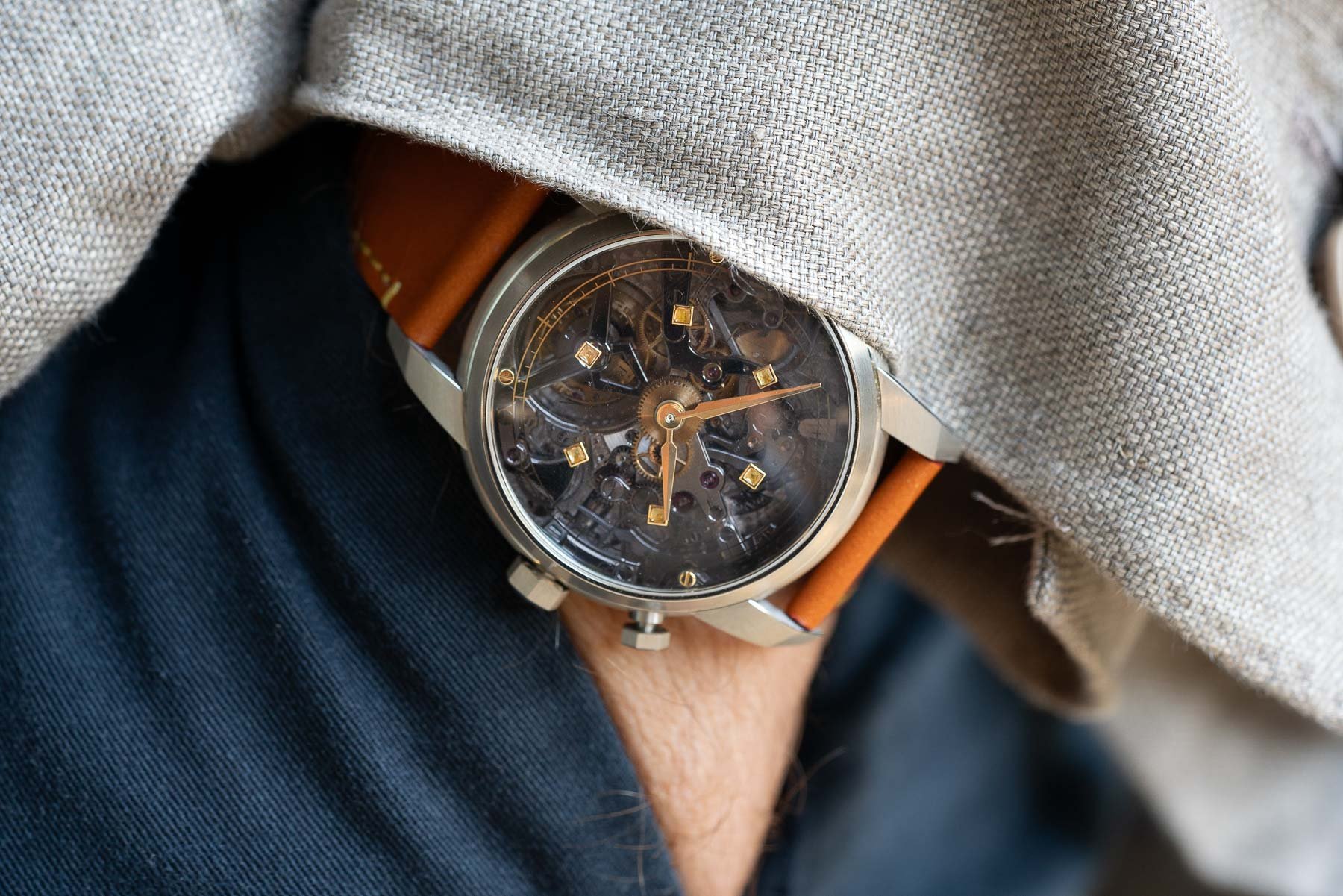Up Close With The Louis Vuitton × Akrivia LVRR-01 Chronographe À Sonnerie
One of the first things to notice about this incredibly complex watch is its size. Upon reading the specifications, you’ll find that it only measures 39.5mm in diameter and 12.2mm in height. And what’s so special about that, you may ask? Well, today, plenty of simple three-handers on the market consume more space. But this Louis Vuitton × Akrivia LVRR-01 is not so much about thinness or diameter. Rather, it’s about a collaboration between two giants, one in size (LVMH) and the other in independent watchmaking (Rexhep Rexhepi). Combine the two, and you will see a watch with impeccable finishing, an innovative mechanical movement, a unique case design, and an artisanal dial.
LVRR-01 Chronographe à Sonnerie
But first things first. When talking to both Rexhep Rexhepi (watchmaker and founder of Atelier Akrivia) and Jean Arnault (Marketing and Development Director, Louis Vuitton Watches) during the introduction event of this new LVRR-01 Chronographe à Sonnerie, it becomes apparent that both have a tremendous passion for Haute Horlogerie. This joint passion brought them together to do something special, resulting in several “firsts.”
Chronographe à Sonnerie complication
One of these firsts is the combination of the chronograph and sonnerie complication. It may sound similar to the Speedmaster Chrono Chime by Omega, but there’s a big difference. Omega’s watch chimes the elapsed time on demand by activating the chime function after the chronograph stops recording. The LVRR-01 is a monopusher chronograph that automatically chimes every 60 elapsed seconds. On the back side of the watch, you can see the chronograph at work on an enamel dial crafted by Nicolas Doublel at La Fabrique du Temps Louis Vuitton.
Rexhep Rexhepi explained that the combination of a chronograph and sonnerie requires a lot of energy. For this, he opted to use two barrels to ensure enough power for the timekeeping and the chiming. That may not sound too special, but the watchmaking mastermind came up with a unique construction in which the second barrel links to the gear train in a specific way (usually, the barrels are separate and run independently). According to Rexhepi, “Once the chronograph is activated and the central mobile is released by the hammer, the rotation from the second barrel is no longer blocked. Energy is thus supplied to the base gear when the chronograph and striking mechanism are running, ensuring that the complications have sufficient energy to function properly without disturbing the movement.”
LVRR-01 caliber with a tourbillon mechanism
Whereas you’d normally see the movement through a sapphire crystal on the case back, the LVRR-01 caliber is partially visible through the tinted sapphire front crystal. And while technically speaking, it’s not a complication, the tourbillon mechanism is also visible through the tinted crystal. Interestingly, the tourbillon cage revolves once every five minutes. When asked, Rexhepi said that this reflects the first tourbillons, which made slower rotations than the more modern tourbillon cages that revolve once every minute. Without going into it too deeply, he said that he firmly believes that a more slowly rotating tourbillon cage will improve the watch’s accuracy.
Combining the Akrivia and LV logos
The LVRR-01 dial is interesting as it hosts one of the other firsts for Louis Vuitton. As you can see, the Akrivia logo has been altered with the LV signature. This marks the first time in Louis Vuitton’s 169-year history that the brand has combined logos with a collaborating partner. I can only imagine the meetings that took place inside Louis Vuitton’s HQ regarding this decision. Also, on the dial, you will find six gold cubes filled with translucent fired enamel. This technique is known as plique-à-jour. The cubes should remind those familiar with Louis Vuitton’s watches of the patented LV Spin Time jumping-hours display.
On the backside of this watch is a more classical white Grand Feu enamel dial designed by Rexhep Rexhepi and masterfully executed by the aforementioned Nicolas Doublel. On this dial, you will find two chronograph scales, one for hours and the other for minutes. Therefore, to read the elapsed time, you will need to take the watch off your wrist.
Tambour case
As you can see, the 39.5mm platinum case clearly has design elements of the Louis Vuitton Tambour case. It is made by Atelier Akrivia but with the involvement of master case maker Jean-Pierre Hagmann. You will find his initials in the lower right lug of the watch.
This masterpiece comes in a special hand-painted Louis Vuitton trunk, and inside, you’ll find a label with the three names of the craftsmen involved. Another impressive (but not pictured) feature is the booklet that comes with it, which shows you the journey of this watch’s development.
Ten pieces only
Besides Rexhep Rexhepi and Jean Arnault’s evident joy and passion for this project, what impressed me most about this watch is that they have kept the LVRR-01 movement inside a very modestly proportioned 39.5mm × 12.2mm case. Keep in mind that this caliber consists of no fewer than 391 components, features a chronograph and sonnerie complications, and also boasts a tourbillon mechanism with 55 parts. The LVRR-01 has a power reserve of 72 hours and ticks at 21,600vph frequency.
It was also interesting to learn that this will be the last watch from Rexhep Rexhepi that bears the Akrivia name on the dial. Don’t worry; Atelier Akrivia will continue to exist. Rexhepi just wants to stop using the name on the dial.
Only 10 of these watches will be produced, each with an estimated retail price of €500,000.
For more information, visit Akrivia online.

